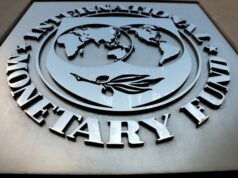India to become largest economy in PPP terms by 2040

Fully integrated efforts by the government, Public Sectors, private companies, organized and unorganized sectors, and firms big and small will ensure that India’s steady progression. reaches its first defining moment when in 2040 it becomes the World’s largest economy in Purchasing Power Parity. At that time who between China or the USA will be the second largest economy, we do not know.
The Indian economy has defied post pandemic predictions of the World’s Economic Pundits. However brand India led by iconic PM Modi and his team is not on path to slow down.
With a V-shaped recovery following the pandemic shocks, India’s run of success continues and her economy is anticipated to repeat a similar growth trajectory in 2023.
The World Bank’s revision of Indian GDP growth projections from 6.4 per cent to 6.9 per cent in the current fiscal year is one among the many affirmations Indian policies and reforms have received in recent times. The World Bank’s India Country Director, Auguste Tano Kouame, credited India’s strong macroeconomic fundamentals for the “remarkably resilient” economy.
According to the government of India’s own projections, India will register a growth of 7 per cent in the 2022-2023 Financial Year. This is no small feat considering that many countries world over are grappling with multi-faceted economic headwinds, according to the Ministry of Statistics & Programme Implementation.
The country’s nominal GDP is also estimated to grow by 15.4 per cent, according to the Ministry of Statistics & Programme Implementation.
Economists say the government’s policy reforms—the most effective being the Production-Linked Incentive Scheme (PLI) and the PM Gati Shakti—have proven instrumental in achieving favourable results for the Indian economy.
“Production -Linked Incentives are very useful to increase manufacturing exports. Absolutely no doubt that it will be a huge part of the shift of manufacturing from a concentrated region of the world to India and other places and India will be a huge beneficiary of such policies”, says author and investor, Harsh Madhusudan.
India has successfully balanced welfare schemes and infrastructure expansion. India was able to ensure food security to millions of families, especially since the pandemic outbreak, while the country’s hard infrastructure has witnessed a total transformation in the past few years.
The construction of expressways at a record pace, coupled with new freight corridors are set to accelerate the pace of the already flourishing Brand India.
India’s goal is to reduce her logistics costs by 6 percentage points from 14 per cent to 8 per cent in the next five years.
This would ensure that logistics play the role of a growth engine in the Indian economy, according to National Logistics Policy.
Improved logistics will add to India’s improved image as an investment destination, thanks to efforts at easing foreign direct investment rules (FDI). India is expected to receive, for the first time ever, 100 billion USD in FDI this financial year.
From renewable energy to real estate…from fintech to automobiles, and from healthcare to hospitality, Indian sectors across the board are poised to take big leaps in times to come.
Experts say India’s balanced fiscal approach of major infrastructural development coupled with economic reforms, will provide the country with the great momentum needed to accomplish its economic goals. Many predict that India will become one of the most sought after markets in the world.
India is on track to become the world’s third-largest economy in under a decade from now.
India has also set the target of becoming a developed country by 2047. In order to meet this goal, the Indian economy will have to consistently grow at an average rate of around 8 per cent per annum.
Western financial bodies can keep forecasting that India will also be affected next year by the global recessionary trends. They forget the purchasing power of the Indian middle class. he Indian economy was not predicted to have rebounded from the pandemic as quickly as it had. India will not be counted out.




